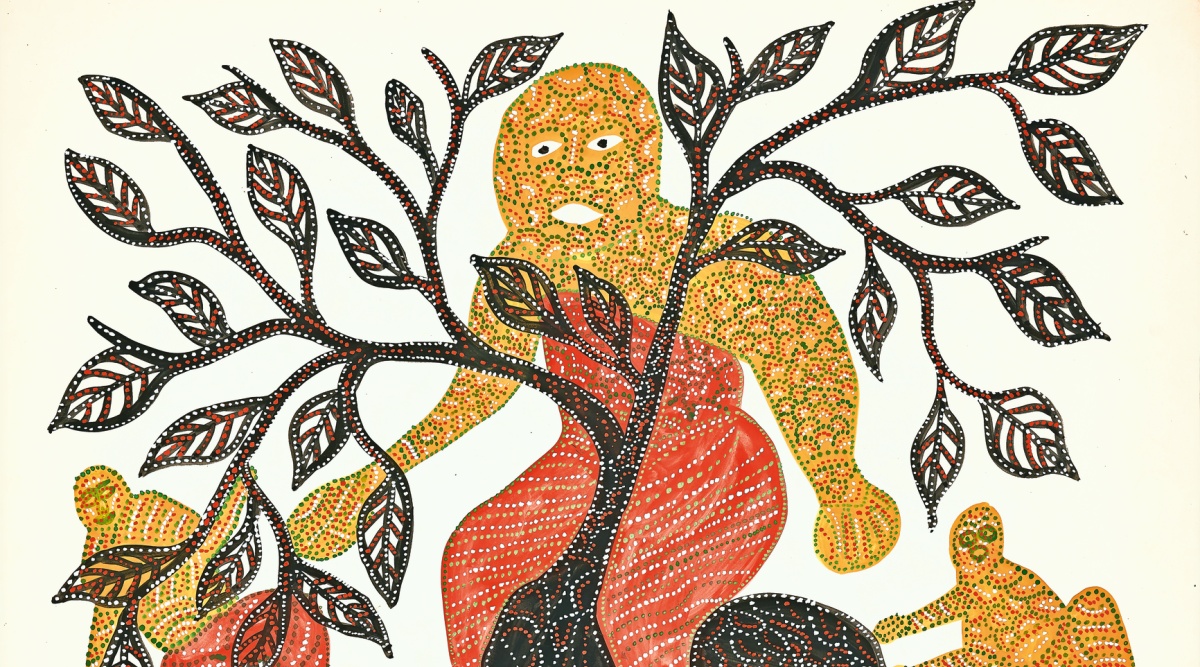 ‘Ghui Jhaad Par Van Manus (1992)’ by Jangarh Singh Shyam. Express
‘Ghui Jhaad Par Van Manus (1992)’ by Jangarh Singh Shyam. ExpressJangarh Singh Shyam was the first to bring his community’s wealth of lore and animism to a global audience, but these weren’t enough to get him a seat at the table of India’s top contemporary artists. Twenty years after his death, he still does not command a Modernist’s staggering prices, but a personal best was achieved at an auction on Thursday night. At gallery and auction house Pundole’s, Shyam’s painting, ‘Ghui Jhaad Par Van Manus’ (1992), sold for Rs 20 lakh ($25,148, hammer price), more than thrice its estimated range. It broke the previous record for the highest selling work by the artist at an auction—’Landscape with Spider’ (1988), which sold for $25,000 (hammer price) by Sotheby’s in 2010–a first for an indigenous artist.
Dadiba Pundole, owner of Pundole’s, told The Indian Express, “The recent growing interest in works by Jangarh Singh Shyam reflects an acceptance into mainstream contemporary Indian art—a huge step for non-metropolitan artists who have so far been marginalised. Particularly special about Jangarh is that he developed an absolutely unique pictorial language which was in no way derivative of Indian or Western art movements.”
‘Ghui Jhaad Par Van Manus’ shows spirits that reside in trees, much like the themes in Shyam’s other works that emphasise oneness and metamorphosis.
Shyam was born in 1962 in Mandla district in Madhya Pradesh. He belonged to the Pardhan community (a different community from the Gonds), expanding his community’s practice of wall drawings and bringing them to paper and canvas. The pioneering artist was invited by artist J Swaminathan to practise at Bhopal’s Bharat Bhavan. Here, Shyam created a distinctive revolutionary style of using dots and dashes, which became known as Jangarh Kalam. It is synonymous with Gond art today, much to the ire of art historians.
Art historian Jyotindra Jain, one of the first to showcase Shyam’s path-breaking work in Indian art, wrote in ‘Jangarh Singh Shyam: A Conjurer’s Archive’ that Shyam was “the progenitor of an exceptionally innovative artistic idiom” but became the casualty of “indiscriminate and ruthless market forces” that called this genre “Gond Painting”.
Shyam painted the main dome of Bharat Bhavan and the interiors of the Madhya Pradesh Vidhan Sabha. He died by suicide, aged 40, in 2001. His untimely death means there are only a finite number of works, which has traditionally driven up prices in the art market.